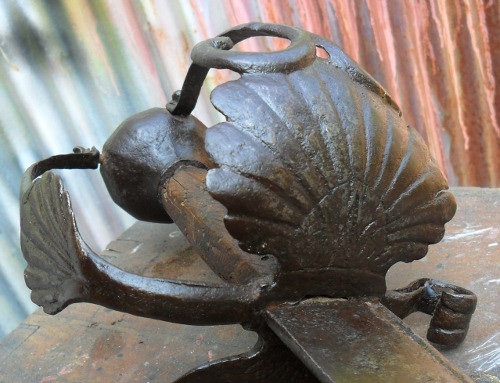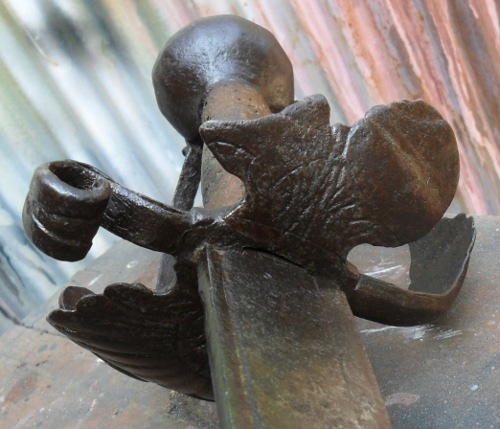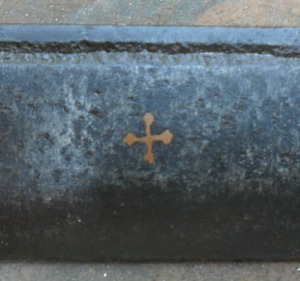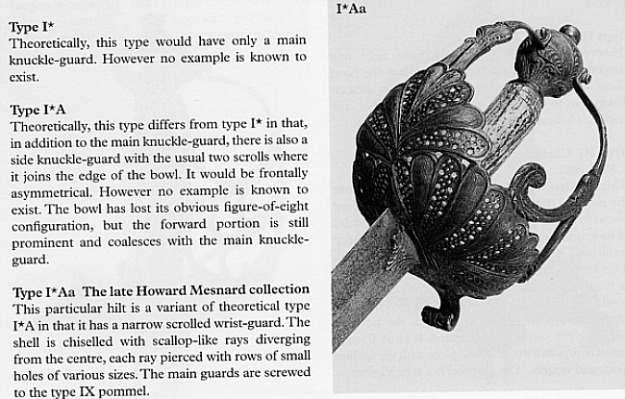Description: English sword, 1630-40. 31” SE blade with one narrow back fuller, with an inlaid copper bladesmith's mark. Hilt of shell shape to the right, a trilobate shell (damaged) on the left. Main knucklebow with central shell, attached to pommel by a screw. Scrolled quillon. Side knucklebow similar to that seen on later Mortuary hilts, also secured to the pommel by a a screw. Large faceted pommel. Original wooden grip.
Condition: Dark, stabilized oxidation overall. The sword appears to never have been apart. When purchased, the hilt was deformed, but I managed to carefully bend things so that it is now close in form to what it originally was. The screw attaching the main knucklebow was partially stripped due to the hilt deformation, but since it is frozen in position, it was left alone. One of the scrolled ends to the side knucklebow is a modern brazed on not-too-well-done restoration, and one day I plan to redo this restoration to better match the original.
The trilobate shell on the left has been broken, and while I had originally intended to restore the missing portions, I have decided to leave it alone.
The scrolled front quillon has suffered some delamination.
The grip is octagonal in section, cracked and wormed. There is a partially-collapsed section due to subsurface worm damage. Since the grip is original, I opted for conservation, and stabilized it with CA glue.
The blade isn't too worn, and appears to be of original length, although it has been resharpened multiple times. Besides the copper cross, the left side of the blade bears remains of circular stamps and engraved lines, but these were too faint to photograph well.
So how does one classify this hilt? Although the knucklebow's central shell and the form of the side guard are found on Mortuary and Proto-Mortuary hilts, this hilt is structurally different from both (although you could make a case for this being a type of Proto-Mort). Discussion, anyone?
--ElJay
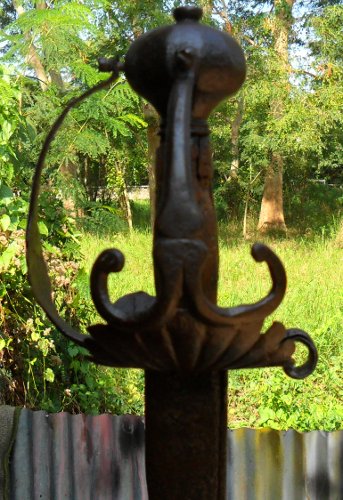
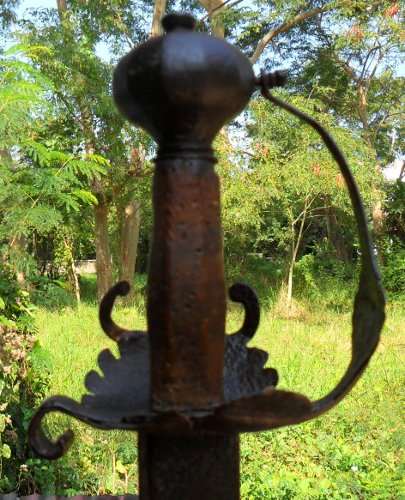
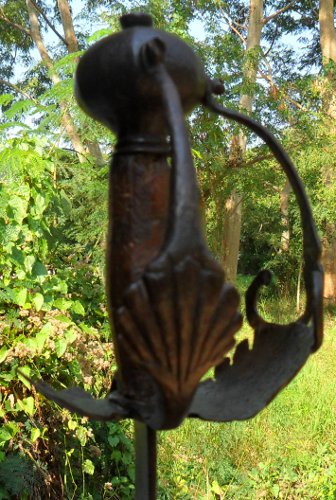
[ Download ]
